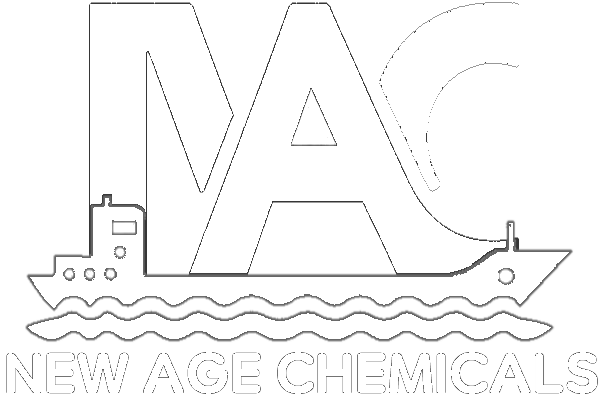|
Product Code: 110006 |
NON-CAUSTIC ALKALINE CLEANER FOR DRYING, SEMI-DRYING AND NON-DRYING NATURAL OILS AND FATS
- Removes Stubborn Residues: Effectively removes drying, semidrying, and non-drying natural oils and fats
- Non-Corrosive: Gentle on ferrous metals
- Compatible with Tank Coatings: Suitable for all tank coatings
- Tank Cleaning: Used for gas and hydrocarbon-freeing of tanks
- Deodorizing: Effectively deodorizes
- Safe and Environmentally Friendly: Non-caustic, non-flammable, and fully biodegradable
- Efficient and Economical: Provides effective cleaning while being cost-efficient
- Residue-Free: Leaves no oily film
- Composition conforming to MARPOL ANNEX V
| APPLICATION AREAS | PROBLEMS SOLVED | |
| Zinc coated tanks Cargo tanks Cargo holds Railings Deck | Drying/semi drying oils Non-drying natural oils and fats Vegetable, fish and animal oils and fats Tank freshening Light fuel |
DESCRIPTION
Alkaliquid Safety is a non-caustic, water-based alkaline tank cleaner formulated with fast-acting wetting agents. It is a powerful alternative to solvent-based or highly alkaline cleaners. It can be used diluted with water for cleaning after discharging drying, semidrying, and non-drying natural oils and fats, or undiluted for general hand cleaning.
Alkaliquid Safety is the preferred solution for cleaning metal contaminations, including zinc, aluminum, copper, brass, and tin.
APPLICATION
Alkaliquid Safety is ideal for most tank cleaning operations, including cleaning animal, vegetable oils, fats, and white mineral oils. It can be used undiluted by hand or diluted with water through direct injection or recirculation, depending on the level of contamination, surface type, water hardness, and temperature.
Alkaliquid Safety has deodorizing and sanitizing properties that make it an excellent choice for cleaning between cargo changeovers, especially when complete hydrocarbon freeing is required.
USE AND DOSING
Instructions are based on experience and are meant only as a guide since circumstances for each tank cleaning operation vary. They are not intended to interfere with the judgment of the vessel’s responsible personnel.
Before tank cleaning, the removal of large oil or residue deposits from the tank is recommended, to ensure effective cleaning and prevent polymerization and evaporation of lighter oil fractions. Flush tanks with cold water as soon as possible after cargo discharge.
For optimal and economical results, combine direct injection with recirculation using tank cleaning machines. If this isn’t possible, try hand spraying.
For best results, heat Alkaliquid Safety to 60-80oC, diluted with fresh or seawater. Lower cleaning temperatures may be necessary for polymerizing natural oils. The solution strength depends on the amount and types of residues to be removed and the cleaning method. The dosage rates are as follows, depending on the residue:
For Fatty acids, fatty alcohols, fish oils: use 2-4% for Direct Injection, or 3-5% for Recirculation (approx. recirculation consumption = 180-300 litres per 1000 m3 tank space)
For Drying & semi drying: use 2-4% for Direct Injection, or 3-5% for Recirculation (approx. recirculation consumption = 180-300 litres per 1000 m3 tank space)
For Vegetable oil: use 1-3% for Direct Injection, or 2-4% for Recirculation (approx. recirculation consumption = 120-240 litres per 1000 m3 tank space)
For Non-drying vegetable oil: use 1-3% for Direct Injection, or 2-4% for Recirculation (approx. recirculation consumption = 120-240 litres per 1000 m3 tank space)
When applying with Hand Spraying, use:
– full strength Alkaliquid Safety for fatty acids, fatty alcohols, fish oils and drying & semi drying,
– diluted 50% or more of Alkaliquid Safety for Vegetable oil and Non-drying vegetable oil.
PRODUCT PROPERTIES
Can be used to clean the majority of properly applied tank coating materials. For zinc silicate coatings and aluminium, tin and their alloys., avoid strong concentrations of Alkaliquid Safety, since high pH values are not acceptable for this type of coatings. It is recommended to test all cleaning chemicals on a small area of tank coating, before full scale application.
Appearance: Liquid
pH (undiluted): 11.0 + 1.0
Density: 1.07 + 0.05 g/cm3
Flash Point: None
General Instructions: Avoid spillage, splashing and mishandling. Precautionary measures for body protection are strongly recommended before and during use.

